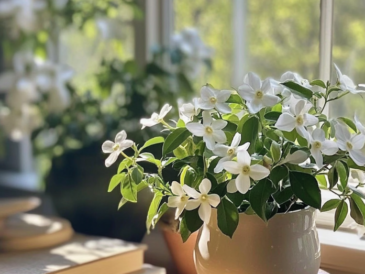A bay tree, scientifically known as Laurus nobilis, is more than just an elegant addition to your garden. From its glossy, dark green leaves to its aromatic presence, a bay tree offers numerous practical and aesthetic benefits. Whether you’re a passionate home cook or a seasoned gardener, the bay tree is a multifunctional treasure that can transform your space while enriching your kitchen. In this article, we’ll dive into why every backyard deserves a bay tree, how to care for it, and the many uses of its prized leaves.
Understanding the Bay Tree: An Overview
Native to the Mediterranean, the bay tree is an evergreen shrub or small tree that has long been valued for its culinary and medicinal properties. While slow-growing, this robust plant can reach heights of up to 30 feet if left unpruned. It’s hardy, drought-tolerant, and thrives in various soil types, making it an excellent option for both beginner and expert gardeners alike. The bay tree can be grown in containers, making it a flexible choice for small spaces, patios, or balconies. Its beauty lies in its simplicity—those deep green, leathery leaves pack a punch when it comes to flavor and utility.
The Culinary Uses of Bay Leaves in Everyday Cooking
Bay leaves are a kitchen staple known for their ability to subtly enhance dishes by releasing a slow, earthy aroma and flavor. Whether you’re simmering a pot of stew, crafting a savory soup, or creating a rich sauce, bay leaves elevate everyday meals into gourmet experiences. A few leaves added to your pot can deepen the complexity of flavors, making them indispensable for cuisines around the globe.
How to Use: Add whole bay leaves early in the cooking process to allow their flavors to infuse into the dish. Always remember to remove them before serving, as they remain tough and inedible. From Italian ragùs to classic French bouquet garni, bay leaves are the secret ingredient that can make any dish stand out.
Health Benefits Associated with Bay Leaves
Beyond their culinary magic, bay leaves are packed with essential nutrients. They’re a rich source of vitamins A, C, and B6, along with key minerals like iron and manganese. Bay leaves also offer anti-inflammatory, antibacterial, and antifungal properties, which can support overall health.
Traditionally, bay leaves have been used in herbal medicine to ease digestive problems, lower stress, and even improve heart health. Whether enjoyed as a spice or used in natural remedies, bay leaves offer a simple way to enhance your wellness routine.
Growing and Caring for Your Bay Tree: Step-by-Step Guide
Now that you know the benefits of having a bay tree, let’s explore how you can grow one in your garden or home.
1. Location & Soil: Bay trees prefer sunny or partially shaded areas with well-drained soil. While they are drought-tolerant once established, they still appreciate a good watering during their first year.
2. Watering & Maintenance: Keep the soil moist for young plants, but once the tree is established, it requires minimal water. Bay trees are quite resilient and can handle dry conditions. However, mulching around the base of the tree will help retain moisture and prevent weeds.
3. Pruning: Prune your bay tree annually to maintain a compact shape or let it grow into a full-sized tree. Pruning encourages healthy growth and ensures a bountiful supply of fresh bay leaves for your kitchen.
4. Pest & Disease Prevention: Keep an eye out for common pests such as aphids and scale insects, which can be treated with insecticidal soap. Fungal diseases, like leaf spot, are rare but manageable with good air circulation and regular inspection.
Harvesting Bay Leaves: How to Do It Right
The best time to harvest bay leaves is during midsummer, when the essential oils are at their peak. Look for mature, dark green leaves, as they offer the most robust flavor.
How to Harvest:
- Use sharp scissors or pruning shears to cut the leaves, taking care not to remove too many at once.
- Rinse the leaves gently in cool water and let them air dry before use.
By harvesting regularly, you’ll encourage new growth, ensuring a continuous supply of fresh leaves throughout the year.
Storing and Preserving Bay Leaves
If you’re not using fresh bay leaves immediately, they can be preserved in several ways:
- Drying: Spread leaves in a single layer on a baking sheet and let them air dry in a warm, dry area. Once fully dried, store them in an airtight container, where they will retain their flavor for up to a year.
- Freezing: Place fresh bay leaves in a sealed plastic bag and freeze them for up to six months, preserving their potency.
Non-Culinary Uses for Bay Leaves: More Than Just Flavor
Bay leaves are versatile in more ways than one. Did you know that they can be used beyond cooking?
- Air Freshener: Simmer a few bay leaves in water to naturally freshen your home.
- DIY Cleaning Products: Due to their antibacterial properties, bay leaves can be used in homemade cleaning solutions.
- Pest Repellent: Place dried bay leaves in cupboards or pantries to deter pests like moths and cockroaches.
Their versatility makes bay leaves an invaluable household asset!
Conclusion: Why a Bay Tree Belongs in Every Garden
Incorporating a bay tree into your garden not only adds elegance and structure but also provides a long-lasting source of flavor and wellness. From culinary uses to health benefits and practical home applications, the bay tree is a gift that keeps on giving. It’s an investment that will reward you with fragrant leaves, minimal maintenance, and endless versatility.
Start growing your own bay tree today, and enjoy the many benefits it has to offer!




